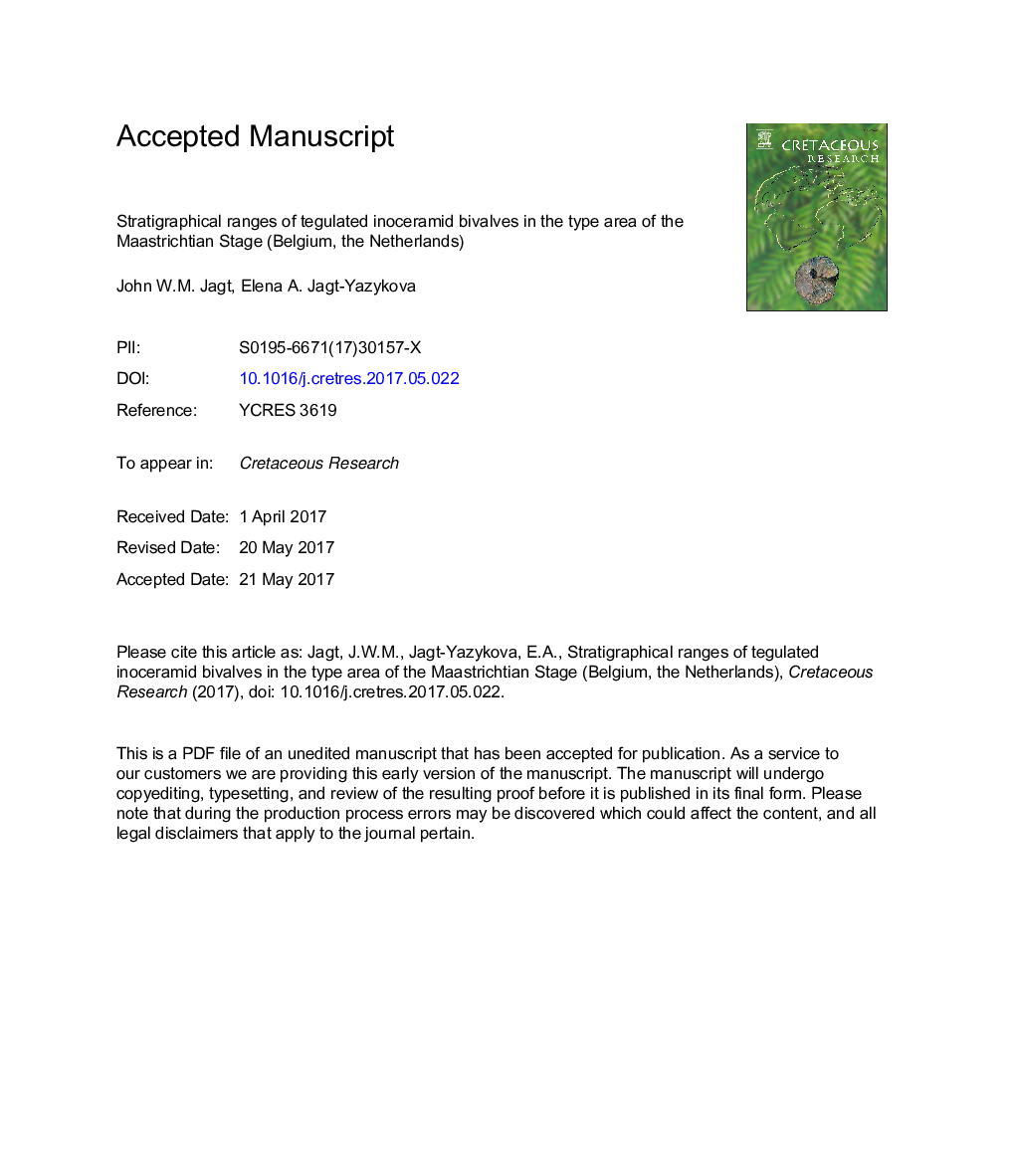| Article ID | Journal | Published Year | Pages | File Type |
|---|---|---|---|---|
| 8916314 | Cretaceous Research | 2018 | 32 Pages |
Abstract
Recently collected material, in fine- to medium-grained biocalcarenites and in coeval flint nodules, of the tegulated inoceramid taxa Spyridoceramus tegulatus (von Hagenow, 1842) and Tenuipteria argentea (Conrad, 1858) from various members of the Gulpen Formation and the overlying Maastricht Formation allows their stratigraphical ranges to be refined. It is concluded that the ranges correspond closely to those in east-central Poland (Vistula [WisÅa] River valley region), where S. tegulatus occurs in the lower Maastrichtian and lower upper Maastrichtian (Endocostea typica, Trochoceramus radiosus and 'Inoceramus' ianjonaensis inoceramid zones, or Belemnella occidentalis and Belemnitella junior cephalopod zones). In contrast, Tenuipteria argentea appears to be confined to the overlying zone of Belemnella (Neobelemnella) kazimiroviensis (SkoÅozdrówna, 1932) and Belemnella (N.) skolozdrownae (Kongiel, 1962) and there is no overlap in the range of both species. In the type area of the Maastrichtian Stage, S. tegulatus ranges from the Vijlen Member (interval 3) of the Gulpen Formation to the top of the Nekum Member of the Maastricht Formation, while T. argentea is restricted to the upper Meerssen Member (subunits IVf-6 and IVf-7, with an acme in the former), straddling the Cretaceous-Paleogene (K/Pg) boundary.
Related Topics
Physical Sciences and Engineering
Earth and Planetary Sciences
Palaeontology
Authors
John W.M. Jagt, Elena A. Jagt-Yazykova,
